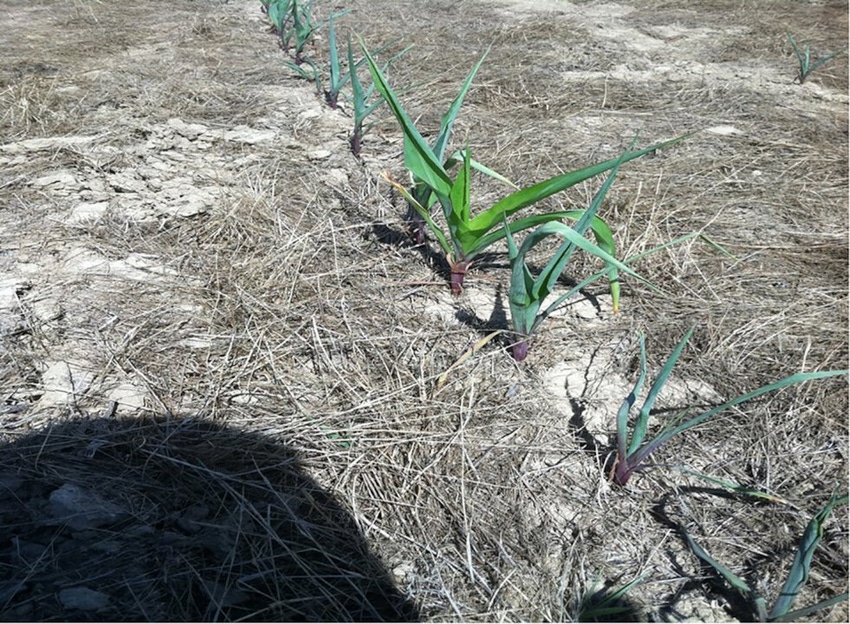May 30, 2023

Source: Corteva Agriscience
Water availability is the most common yield-limiting factor in corn production. Drought stress early in the season is less common and generally less detrimental to corn yield than during pollination and grain fill, but prolonged or severe drought conditions early on can still significantly reduce yield.
Early season drought conditions can reduce corn plant size and leaf area, leading to fewer kernels on each ear. Root development and nutrient uptake can also be affected later in the season.
Corn seeds need to imbibe 30-35% of their weight in water to initiate the germination process. If the soil surrounding the seed is too dry to supply the necessary moisture, germination will be delayed.
Fertilizers placed in the seed furrow may also inhibit germination due to the salt being more pronounced in drier soil, effectively drawing moisture away from or out of the germinating seed or root tissues.
Corn plants respond to drought stress by closing stomates and rolling leaves to reduce the volume of water transpired through the plant. This benefits the plant by protecting it through short bouts of drought stress.
However, closing the stomates also reduces the ability of the plant to take in carbon dioxide, which slows down photosynthesis and plant growth. The eventual impact on yield is determined by the severity and duration of stress. Drought stress lasting four or more days is likely to reduce yield.
There are proactive management practices growers can take to help make the crop more resilient to early season drought stress:
Ensure adequate potassium fertility.
Reduce or eliminate spring tillage to help preserve soil moisture.
Avoid planting too shallow.
Ensure good seed to soil contact at planting.
Manage soils to improve structure and water-holding capacity and minimize compaction.
You May Also Like




